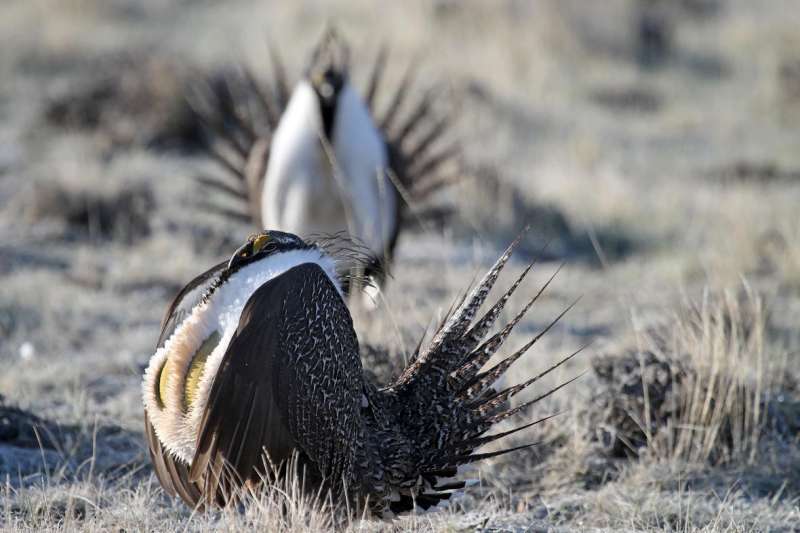New research highlights decline of greater sage-grouse in the American West, provides roadmap to aid conservation

Greater sage-grouse populations have declined significantly over the last six decades, with an 80% rangewide decline since 1965 and a nearly 40% decline since 2002, according to a new report by the U.S. Geological Survey. Although the overall trend clearly shows continued population declines over the entire range of the species, rates of change do vary regionally.
The report represents the most comprehensive analysis of greater sage-grouse population trends ever produced and lays out a monitoring framework to assess those trends moving forward. The study can also be used to evaluate the effectiveness of greater sage-grouse conservation efforts and analyze factors that contribute to habitat loss and population change—all critical information for resource managers.
"Every day, the USGS brings diverse stakeholders the compelling science they need to make strategic, on-the-ground policy and management decisions," said David Applegate, associate director exercising the delegated authority of the USGS director. "With this framework in place, resource managers can more nimbly respond to population declines with actions such as redistributing monitoring efforts or prioritizing where management intervention may be needed."
USGS scientists and colleagues developed the framework to estimate greater sage-grouse population trends in the 11 western states where the species lives—California, Colorado, Idaho, Montana, Nevada, North Dakota, Oregon, South Dakota, Utah, Washington and Wyoming. The greater sage-grouse is a vulnerable species and an indicator of the overall health of the iconic sagebrush ecosystem.
The research found that in recent decades the rate of greater sage-grouse decline increased in western portions of the species' range, particularly in the Great Basin, while the declines have been less severe in eastern areas. Western Wyoming was the only region to show relatively stable sage-grouse populations recently. Taken as a whole, the greater sage-grouse population now is less than a quarter of what it was more than 50 years ago.
To complete the framework, USGS and Colorado State University researchers collaborated with the Western Association of Fish and Wildlife Agencies, individual state wildlife agencies and the Bureau of Land Management. Together, they compiled information and created a rangewide database of greater sage-grouse breeding grounds. Researchers used that information to assess past and current sage-grouse population trends in different parts of the species' range.
In addition to the database and population-trend assessment, researchers also developed a "Targeted Annual Warning System" to alert biologists and managers when local greater sage-grouse populations begin to decline or have diverged from regional trends. The research identified the most at-risk breeding grounds, with the greatest risk seen at the periphery of the species' range. The report shows that there is only a 50% chance that most breeding grounds, called leks, will be productive in about 60 years from now if current conditions persist. USGS scientists will continue to analyze information to determine the factors driving changes in breeding areas and populations, including the influence of habitat loss and degradation.
"The framework we developed will help biologists and managers make timely decisions based on annual monitoring information," said Peter Coates, USGS scientist and lead author of the report. "This will allow them to address local issues before they have significant impacts on the population."
More information: Peter S. Coates et al, Range-wide greater sage-grouse hierarchical monitoring framework—Implications for defining population boundaries, trend estimation, and a targeted annual warning system, (2021). DOI: 10.3133/ofr20201154
Provided by United States Geological Survey



















